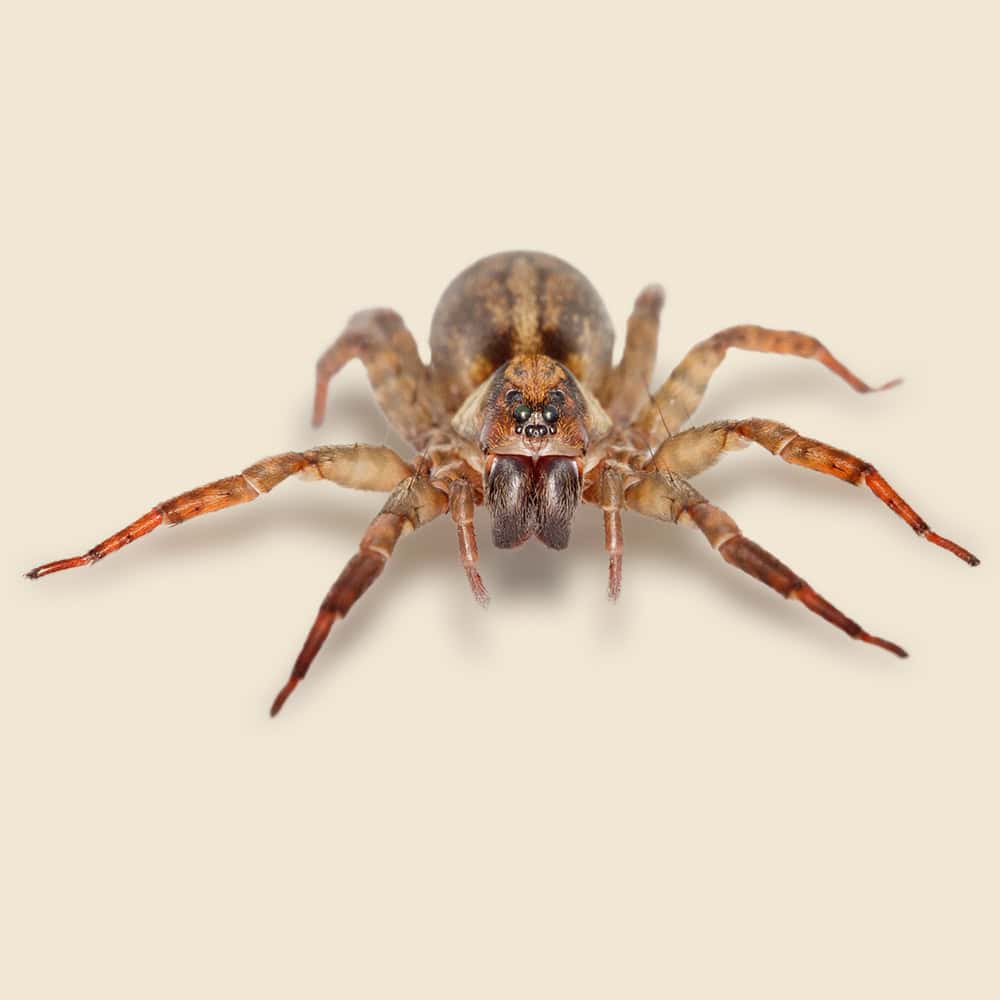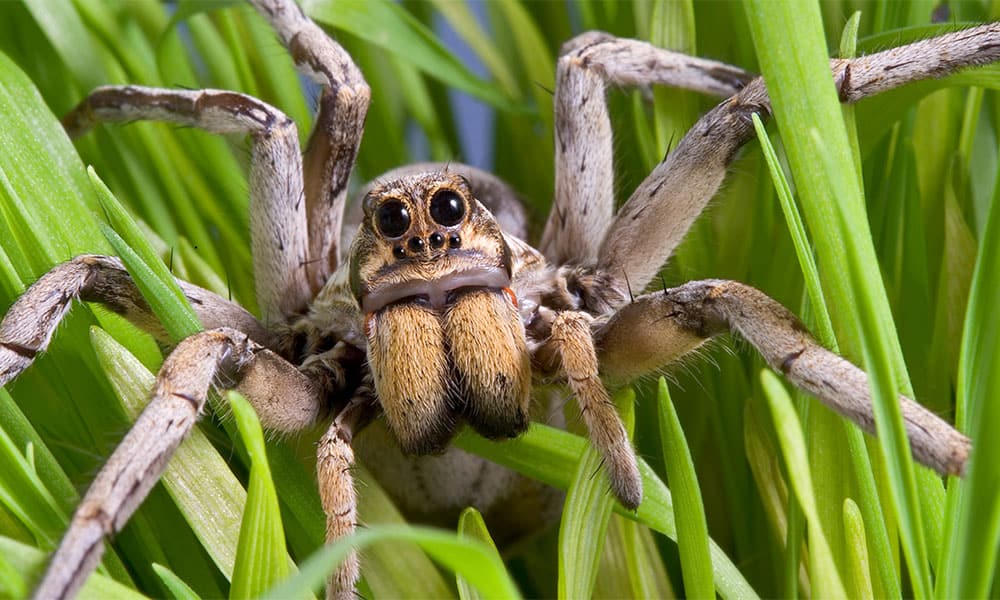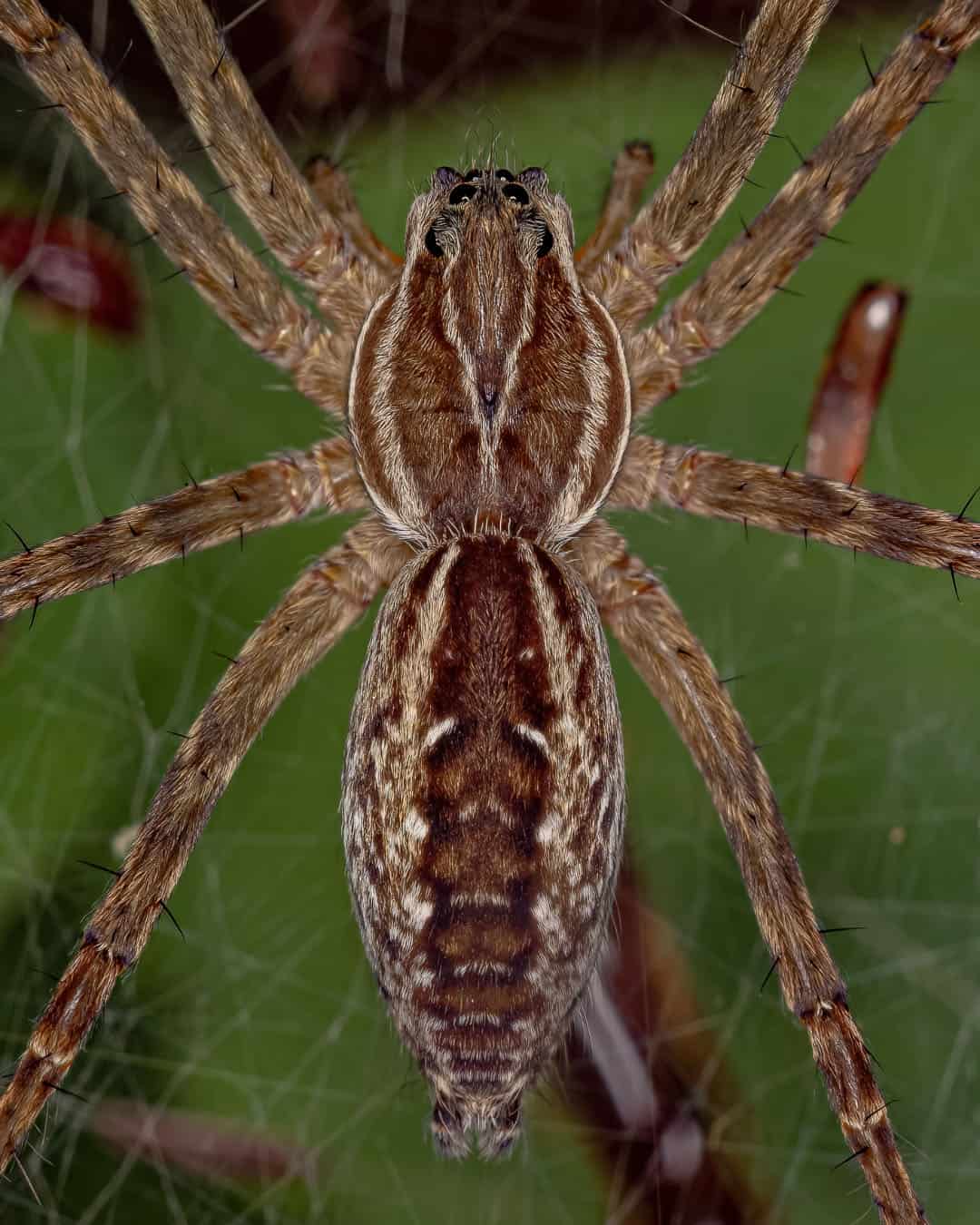Wolf Spider Facts & Information
Wolf spiders are robust, agile arachnids known for their hunting prowess and distinctive appearance. Recognizable by their large size and hairy bodies, these spiders are often found in gardens, fields, and around homes, where they actively hunt for prey. While generally harmless to humans, their presence can be alarming due to their size and fast movements.

Lycosidae
What You Need To Know About Wolf Spiders
What do wolf spiders look like?
Wolf spiders are robust, medium to large-sized arachnids, typically measuring between 1/2 to 2 inches in body length. They have a hairy, brownish or grayish body with distinctive markings, including darker stripes and spots. Their long legs are well-adapted for running, giving them a rugged appearance.
What do wolf spiders eat?
Wolf spiders are carnivorous and primarily feed on insects, including beetles, crickets, and other small arthropods. They are skilled hunters that rely on their keen eyesight and speed to stalk and capture prey, rather than using webs.
What sort of habitat do wolf spiders live in?
Wolf spiders are highly adaptable and can be found in various habitats, including gardens, grasslands, forests, and even inside homes. They often hide under rocks, logs, and leaf litter, where they can easily ambush their prey.
How do wolf spiders commonly behave?
Wolf spiders are nocturnal hunters that actively roam their environment in search of food. They rely on their excellent vision to locate prey, and once they spot a target, they sprint towards it, relying on their speed and agility. Unlike many spiders, they do not spin webs to catch their food and are generally solitary creatures.
Did you know this about wolf spiders?
Wolf spiders are unique among spiders because they carry their egg sacs attached to their spinnerets, and when the spiderlings hatch, they climb onto their mother’s back for protection. Additionally, they have excellent vision due to their large, forward-facing eyes, allowing them to see well in low light and making them effective hunters. Despite their intimidating appearance, wolf spiders are harmless to humans and play an important role in controlling pest populations.
Understanding Wolf Spider Infestations
Understanding wolf spider infestations is crucial for effective management. These spiders vary in color from brown to gray, often featuring a pattern of stripes or spots. Unlike many spiders that spin webs, wolf spiders are ground hunters who rely on their keen eyesight and speed to catch insects, such as flies, crickets, and other small pests. They are primarily nocturnal, emerging at night to hunt and explore their surroundings. While they help control pest populations, they may enter homes in search of food or shelter.

How Hearts Handles Wolf Spider Treatment
Hearts Pest Management employs an integrated pest management approach to handle Wolf Spider infestations.
Wolf Spider Inspection
Wolf Spider Treatment
Wolf Spider Prevention
Educational Resources

Think You Might Have a Wolf Spider Infestation?
At Hearts Pest Control, we understand the challenges associated with Wolf Spider infestations and are here to provide professional solutions tailored to your needs. Flourishing in warm and humid climates, they are prevalent in many regions, including San Diego County, Orange County, and Los Angeles County.